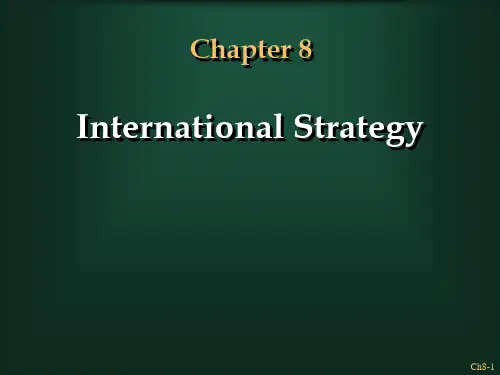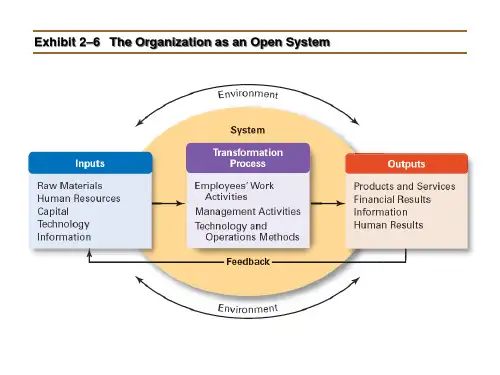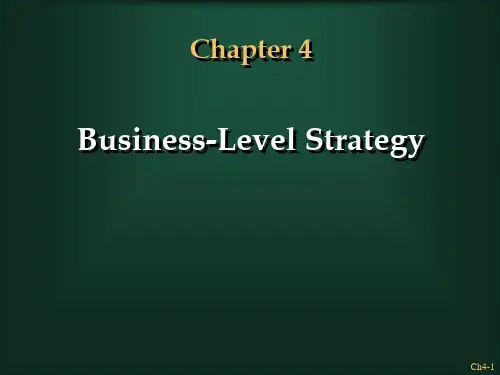战略管理流程讲义(英文版!11资料
- 格式:ppt
- 大小:594.50 KB
- 文档页数:9
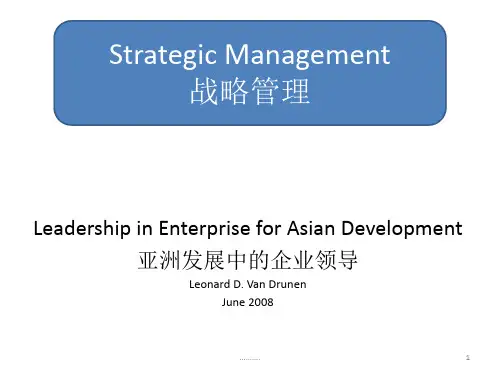

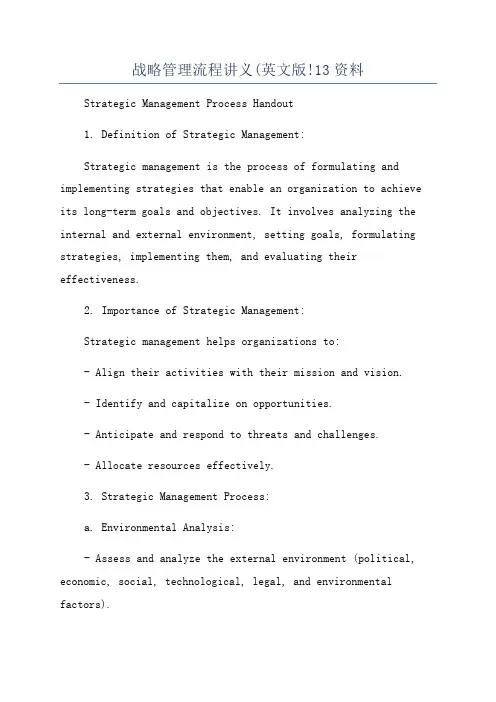
战略管理流程讲义(英文版!13资料Strategic Management Process Handout1. Definition of Strategic Management:Strategic management is the process of formulating and implementing strategies that enable an organization to achieve its long-term goals and objectives. It involves analyzing the internal and external environment, setting goals, formulating strategies, implementing them, and evaluating their effectiveness.2. Importance of Strategic Management:Strategic management helps organizations to:- Align their activities with their mission and vision.- Identify and capitalize on opportunities.- Anticipate and respond to threats and challenges.- Allocate resources effectively.3. Strategic Management Process:a. Environmental Analysis:- Assess and analyze the external environment (political, economic, social, technological, legal, and environmental factors).- Identify opportunities and threats facing the organization.b. Internal Analysis:- Identify strengths and weaknesses.c. Goal Setting:- Establish long-term goals and objectives based on the analysis of the external and internal environment.- Ensure the goals are measurable, specific, and alignedwith the organization's mission and vision.d. Strategy Formulation:- Develop strategies to achieve the identified goals and objectives.- Consider various strategic options such as differentiation, cost leadership, focus, integration, and diversification.- Select the most suitable strategies considering the organization’s resources, capabilities, and market conditi ons.e. Strategy Implementation:- Translate the selected strategies into action plans and initiatives.- Monitor and control the implementation process.f. Strategy Evaluation:- Evaluate the extent to which the goals and objectives are being achieved.- Identify any changes in the external or internal environment that may require adjustments to the strategies.- Make necessary changes and modifications to improve the effectiveness of the strategies.4. Challenges in Strategic Management:- Uncertainty and volatility in the business environment.- Rapid technological advancements.- Limited resources and budget constraints.- Resistance to change and organizational inertia.5. Tips for Effective Strategic Management:- Involve key stakeholders and employees in the strategic management process.- Continuously scan and monitor the external environment for changes and trends.- Foster a culture of innovation and adaptability within the organization.- Regularly review and adjust the strategies based on feedback and evaluation.- Encourage collaboration and cross-functional cooperation.- Invest in training and development to build strategic capabilities.。
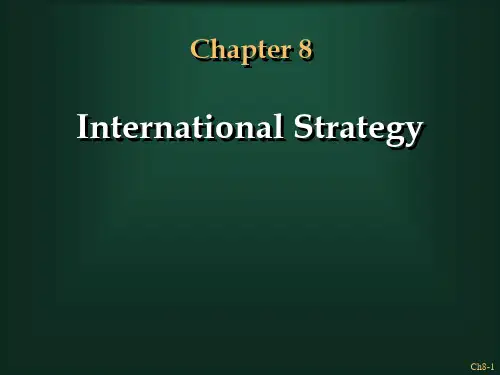
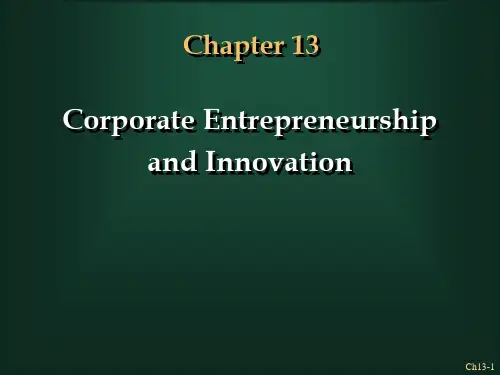

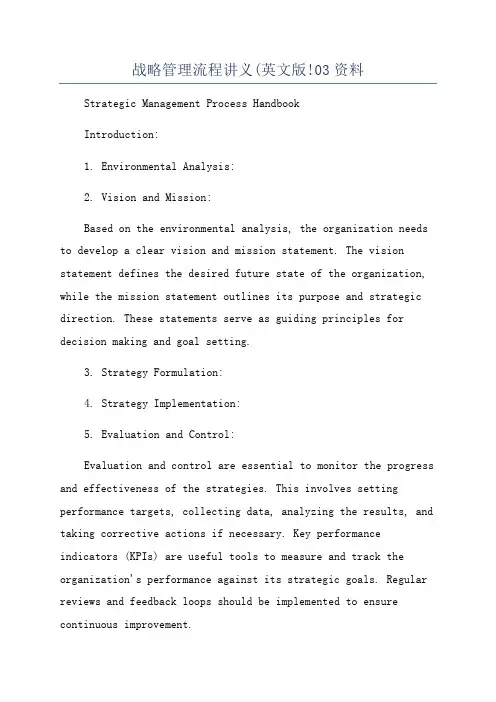
战略管理流程讲义(英文版!03资料Strategic Management Process HandbookIntroduction:1. Environmental Analysis:2. Vision and Mission:Based on the environmental analysis, the organization needs to develop a clear vision and mission statement. The vision statement defines the desired future state of the organization, while the mission statement outlines its purpose and strategic direction. These statements serve as guiding principles for decision making and goal setting.3. Strategy Formulation:4. Strategy Implementation:5. Evaluation and Control:Evaluation and control are essential to monitor the progress and effectiveness of the strategies. This involves setting performance targets, collecting data, analyzing the results, and taking corrective actions if necessary. Key performance indicators (KPIs) are useful tools to measure and track the organization's performance against its strategic goals. Regular reviews and feedback loops should be implemented to ensure continuous improvement.6. Strategic Renewal:Conclusion:The strategic management process is a continuous and dynamic process that requires systematic and thoughtful planning. It involves analyzing the internal and external environment, formulating strategies, implementing them effectively, and evaluating the results. Strategic management is essential for organizations to navigate through uncertainties and achievelong-term success. By following this handbook, organizations can develop and implement robust strategies that align with their vision and mission.。
